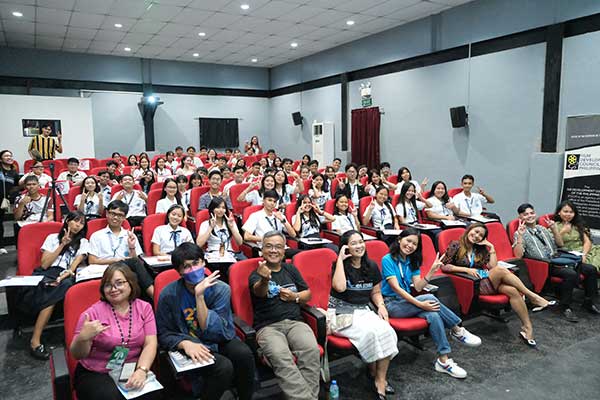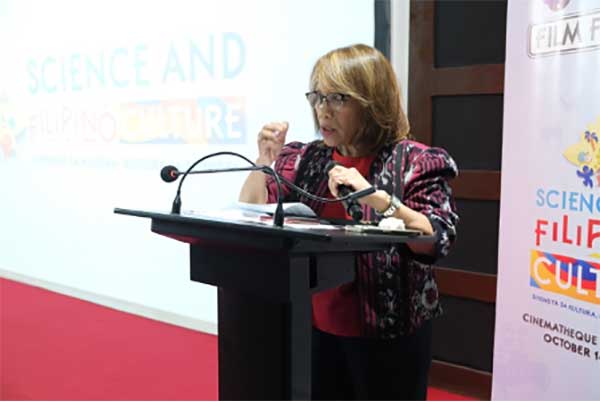In an era saturated with misinformation, the creation of science documentary films stays alive with Indie-Siyensya standing at the forefront, ensuring this vital medium continues to thrive. Now in its 8th edition, the filmmaking competition has garnered over a hundred entries across the country featuring the theme “Siyensya sa Kultura, Kultura sa Siyensya,” which emphasizes the vital role of scientific inquiry in shaping cultural practices and vice versa.
The 8th Indie-Siyensya Filmmaking Competition, organized by the Department of Science and Technology – Science Education Institute (DOST-SEI), has officially premiered, bringing together filmmakers and audiences to explore the rich interplay between science and Filipino culture.
In collaboration with the Film Development Council of the Philippines (FDCP), the competition showcases a diverse array of films that will be screened at various Cinematheque Centres across the country (Manila, Iloilo, Negros, Davao and Nabunturan) from October 14 to 18 and will be available online through the streaming platform JuanFlix on October 19 to November 8, 2024. The initiative seeks to utilize the power of storytelling through film to communicate essential scientific concepts to the public.
“For the past six years, the FDCP and Indie-Siyensya of the DOST-SEI have had this really fruitful partnership. The correlation between science and filmmaking are practically indivisible because the advancements done in the art and technology of filmmaking is highly dependent on science,” says Jose Javier-Reyes, Chairman and CEO of the FDCP.
This year, the competition features two distinct categories: the Youth Category and the Open Category. The Youth films focus on uncovering science within Filipino culture, highlighting evidence-based indigenous practices and traditions. The Open Category, on the other hand, explores how Filipino culture informs and integrates science and technology into everyday life.
Among the hundred entries in the Open Category is Eksmen by Heather Simonette Rose M. Intong, a captivating documentary that delves into the extraordinary diving abilities of the Badjaos (Sama Dilaut) in Simunul, Tawi-Tawi leaving a lingering question to the audience whether this tribe should let their tradition be swept by the passing tides of time or utlize their adaptive nature to keep up with the fast-paced society.
Another notable entry, Kalasag ng Tubod by Mondrayniel F. Sarte, brings the viewers to the picturesque Twin Lakes Natural Park in Negros Oriental, shedding light on the harmonious relationship between traditional ecological knowledge and modern conservation efforts. Through interviews and expert observations, the film illustrates how “bayanihan,” plays a crucial role in protecting this vital ecological resource.
Meanwhile, Herbolaryo by Dexter Paul De Jesus and Drexler Jaramel, explains the role of Herbolaryos and the culture of using herbal plants in traditional healing, as modern science transforms these medicinal plants into modern drug formulations.
Banghay by John Rafael C. Labini is a captivating documentary that explores the tradition of naming winds in Malaban, Binan, Laguna. Through a compelling blend of folklore and science, the film uncovers the significance of these wind names to the local fishing community and their connection to the environment.
Additionally, Through Each Thread by Gian Arre highlights the intricate weaving tradition of Indang, Cavite, showcasing the scientific principles inherent in this age-old craft, while emphasizing the cultural significance of the weaving process.
In the Youth Category, films like KaLikhasan by Julia Gabrielle P. Salonga and Nganga by Anjalique Rendon dive into the sustainability of traditional practices, with KaLikhasan focusing on the benefits of bahay na bato architecture and Nganga examining the cultural and scientific aspects of betel nut chewing among the Dumagat-Remontados.
Gakit: The Journey of Change by Eula Frances A. Macabodbod explores the historical and cultural significance of the Pulangi River in Valencia, Bukidnon, while Decadent Bitterness by Lloyd Zedric B. Apacible reflects on the rich history tied to the local delicacy, piaya. Gangis by Xandre Yosef Gaan further bridges tradition and science by connecting the beliefs of the Talaandig tribe with scientific insights.
Dr. Ruby Cristobal, a science communicator and member of the board of judges also stressed that as the scientific community continues to push the boundaries of knowledge, we must always acknowledge our roots and embrace our diverse cultural heritage.
Culture, she pointed out, is not separate from science—it is integral to who we are as a people.
The Indie-Siyensya competition not only highlights the creativity of Filipino filmmakers and science communicators but also underscores the importance of integrating cultural heritage and scientific knowledge for the betterment of society.
As DOST-SEI and FDCP continue to forward these initiatives, they invite audiences to reflect on the essential connections between art, science, and Filipino identity.
























